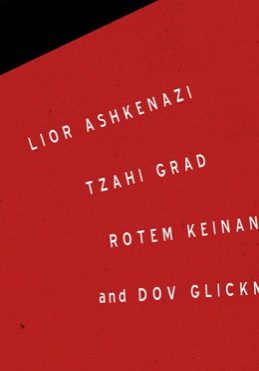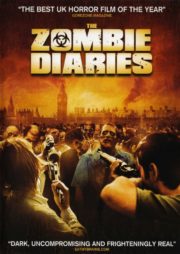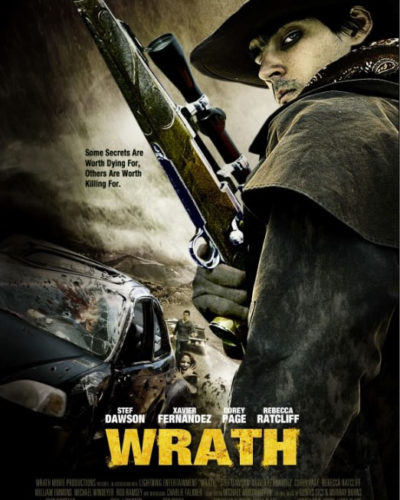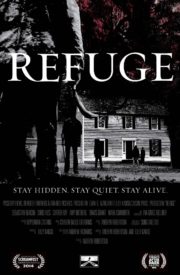“Man is the cruelest animal.” – A Cinematic Dance with Darkness
In the veins of horror cinema, there runs a particularly gritty strain of films that eschew the supernatural in favor of the monstrous potential resting within human hearts. “Big Bad Wolves,” a 2014 release directed by the Israeli duo Aharon Keshales and Navot Papushado, twines a tale that is not strictly horror in the traditional sense, but rather a macabre thriller that dips its toes into the murky waters of vengeance and moral ambiguity.
The premise is simple yet potent: A series of brutal murders has left the police force desperate and on edge. When the prime suspect, a seemingly mild-mannered teacher named Dror (played by Rotem Keinan), is captured, evidence is insufficient to charge him. Hot on his heels is Mickey (Lior Ashkenazi), a rogue cop with a vendetta, and Gidi (Tzahi Grad), the father of one of the victims, whose thirst for retribution knows no bounds. What unfolds is a twisted game of cat and mouse that blurs the lines between justice and cruelty, leaving viewers to question who the “big bad wolves” truly are.
The Lurking Fear: Crafting an Atmosphere
The horror of “Big Bad Wolves” doesn’t emerge from typical genre tropes but rather from a nail-biting blend of suspense and the dread that comes from acts of human depravity. The film’s horror is psychological, grounded in the gritty, often horrifying potential of real-life violence. Keshales and Papushado are masters at maintaining a sense of foreboding, playing on the audience’s nerves with a steely precision.
The tension is always palpable, creeping beneath the surface of scenes that, at times, are deceptively calm but charged with lurking danger. The directors toy with anticipation and the audience’s fears; the suggestion of violence often proves as harrowing as its graphic depiction.
Through the Camera’s Eye: Aesthetic Horror
Much of “Big Bad Wolves'” power hinges on its cinematic language. The cinematography employs a chilling color palette that oscillates between cold, detached blues and grays during the methodical hunt for the killer, and the stark, alarming reds that suggest imminent bloodshed. Camera movements and angles convey a claustrophobic proximity to the characters, trapping the audience in this grim reality. The lack of special effects only intensifies the focus on character-driven narrative, building fear that is all too human and real.
Still, there are visual techniques that stand out. Impressive static shots act as disquieting tableaus, resonating with the tension of classic suspense cinema. These carefully constructed scenes create a loaded atmosphere that’s almost unbearable in its restraint, amplifying the impending horror without the need for jump scares or flashy visuals.
The Sound of Silence: Auditory Fear
The film’s soundtrack and sound effects are powerful narrative tools that weave seamlessly into the tapestry of terror. The music is an orchestral landscape of dread, underscoring moments of heightened tension without overpowering them. The use of sound is intelligent, knowing when to swell and when to hold back, and there are instances where the absence of sound or the menacingly quiet backdrop heightens the sense of alarm.
Moreover, the acoustic texture of footsteps, breaths, and the unsettling stillness of the forest generates an organic fear that pulsates through the viewer’s imagination. It’s an example of how “Big Bad Wolves” employs auditory elements not merely to enhance the narrative but to embody it.
Acts of Desperation: Performances That Terrorize
With a cast that delivers emotionally charged and intense performances, it’s the actors who breathe life into the horror of “Big Bad Wolves.” The characters are well-etched, with each principal actor imbuing their role with a believable mix of desperateness and ruthlessness. Ashkenazi and Grad play off each other’s energy with electric tension. They form an unlikely and disturbing partnership driven by their shared, albeit twisted, idea of justice.
Keinan, as the suspect, brings a nervous energy that keeps viewers guessing about his innocence or guilt. It’s a tightrope walk of a performance that centers the moral dilemma at the heart of the film. The realism and commitment of the actors make for an experience where the horror is not about otherworldly creatures but the darkness that ensues from broken humanity.
The Beast Within: Dissecting the Mechanics of Fear
“Big Bad Wolves” does not fit neatly into a single horror subgenre; its roots extend into psychological thriller, torture cinema, and dark comedy. The calculated use of suspense and the psychological play of guilt and innocence is reminiscent of Hitchcock’s finest, yet the film also channels a grim, almost Cohen-esque humor, reminding us of the absurdity interwoven with our darkest impulses.
The film consciously sidesteps a dependence on gore, despite its visceral subject matter. The methods it employs to frighten are tactile and psychological, and while there are shocking moments, they serve the story rather than merely shock for shock’s sake. This restraint gives the horror a more profound resonance, affecting the psyche long after the credits roll.
Underneath the surface, “Big Bad Wolves” is rife with underlying themes exploring the perpetuation of violence, the nature of justice, and the complexities of vengeance. The film strikes a haunting chord in its observation of humanity’s cruelty and the malleable morality that can lead even the most righteous down sinister paths.
Into the Woods: The Final Verdict
In closing, “Big Bad Wolves” is a terrifyingly effective film, not for its capacity to elicit screams, but for its ability to provoke deep unease and reflection. It’s a layered, thought-provoking work, challenging the viewer with its depiction of retributive justice and the moral compromises that come with it.
This film will resonate most with those who appreciate horror that delves into the human psyche, as well as fans of international cinema and noir thrillers. It is a hauntingly unique piece that stands apart from mainstream horror offerings, and while it pays homage to genre conventions, it does so while confidently crafting its own identity.
Comparatively, it shares cinematic kinship with films like “Prisoners” (2013) or the South Korean masterpiece “I Saw the Devil” (2010), yet it holds its ground with an original voice that is as brutal as it is elegant.
Big Bad Wolves’ strengths lie in its suspenseful narrative, robust performances, and its thematic depth. However, its slow burn pacing and avoidance of outright scares might distance viewers seeking more traditional horror fare.
Advisory note: The film contains scenes of graphic violence and torture that might be disturbing for some viewers. Viewer discretion is advised.
Ultimately, “Big Bad Wolves” is a haunting excursion into the darkest corridors of the human condition. It’s a stark, chilling reminder that sometimes the real monsters are much closer to home than we’d like to believe.




